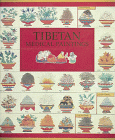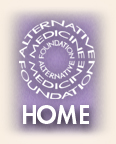|
|
Principle of Energy |
English Translation |
Function in the Human Body |
Human Constitution |
| Lung | Wind | Controls movement and bodily functions, such as circulation, breathing, intellect, speech, and impulses. | Creative Quick to learn, but quick to forget Excitable, lively, fun personality Changeable moods Irregular daily routine High energy in short bursts Impulsive |
| Tri-pa | Bile | Relates to internal heat and controls digestion, assimilation of food, and basic metabolism. | Sharp mind, good concentration Orderly, focused Assertive, self-confident Competitive, enjoy challenges Subject to impatience Good public speakers Good management and leadership ability |
| Badken | Phlegm | Maintains and regulates normal functioning and the balance of energies. | Easygoing, relaxed, slow-paced Affectionate Stable, reliable, faithful Slow moving and graceful Slower to learn, but never forgets Self-sufficient Slow to anger |
Like Ayurveda, Tibetan medicine views illness as the result of imbalances in the biological rhythm, or within the three principles of energy, seven components, and three excreta. When examining a patient, the practitioner begins by assessing the patient's constitution, which may be a combination of the three principles of energy. This examination includes observing the patient, making inquiries, and pulse-taking. Then, the practitioner determines a reason for the imbalance and implements a method of restoring balance. Of course, this brief explanation is an oversimplification and does not do justice to the full complexity of Tibetan medicine.
SCIENTIFIC AND CLINICAL RESEARCH
A vast body of medical literature on the Tibetan medical system has developed over the centuries, including the oldest surviving written system of medical psychiatry, an enormous herbal pharmacopoeia and a complete system of diagnosis and treatment. The diverse and complex elements that constitute Tibetan medicine--its highly refined ethical principles, its philosophical and psychological structure--deserve serious attention, study, documentation, and preservation by the international scientific community. See TibetMed for further information.
Most of the clinical research trials on Tibetan herbal medicines are on westernized formulations based on traditional medications, and are used for western indications that are not necessarily recognized in Tibetan medicine. The formulations are directed towards the western patient who has little opportunity to consult with a Tibetan doctor since there are so few trained doctors and even fewer licensed to practice in the West. Most published research has been carried out on the Padma formulations, now manufactured in Switzerland, and originally brought to the west by the Mongolian emchi-family Badmajew (refer to "Healing Herbs, the Heart of Tibetan Medicine" for more information).
Most of the clinical trials on Tibetan herbal formulations have been conducted in Europe and Israel using PADMA 28 and aconite-free PADMA 28, known in the United States as PADMA BASIC. The minute difference between the two formulas does not appear to change their action profile, and is consistent with the traditional Tibetan practice of adapting formulas. Both are derived from the ancient Gabur formula or "camphor formula", one of the many preparations that were reformulated and standardized at the turn of the 20th century, based on information from monastery documents and lama doctors. As the formulas spread throughout the Himalayan region, the emchis (traditional Tibetan practitioners) were not always able to obtain the herbs used in the original formulas, so they substituted and added regional plants with the same properties. Consequently, the original formulas have continued to change and evolve.
![]()
NOTE: The following resource listings are not intended to be comprehensive, nor to be used as a guide for treatment. They are provided for information only. The resources are selected and categorized to help you with your own research.
AUTHORITATIVE RESEARCH RESOURCES
| Jürgen C. Aschoff Annotated Bibliography of Tibetan Medicine Garuda, 1996 Professor Aschoff’s book is a collection of all the monographs, academic and general articles in periodicals published throughout the world up to 1995. The information is in both German and English. This vast bibliography is also available in full text by clicking on "International Bibliography of Tibetan Medicine" within the author’s website: http://www.uni-ulm.de/~jaschoff |
| The Dalai Lama, Francisco J. Varela, Ph.D. (Editor) Sleeping, Dreaming, and Dying: An Exploration of Consciousness with the Dalai Lama Wisdom Publications, 1997 The account of a historic dialogue between leading Western scientists and one of the foremost representatives of Buddhism today, the Dalai Lama of Tibet. Revolving around the three key moments of consciousness of sleep, dreams, and death. |
 |
Dr. Yeshi Dhonden Healing from the Source: The Science and Lore of Tibetan Medicine Snow Lion Publications, 2000 Dr. Dhonden presents the theory of Tibetan Medicine, using over 50 years of his teachings. |
| Dr. Yeshi Dhonden Health Through Balance: An Introduction to Tibetan Medicine Snow Lion Publications, 1986 |
| Lobsang Rapgay and Robert Sachs Health for Life: Healing Series Heartsfire Books, 1998 An excellent resource on Tibetan medicine that can be understood and used by both the physician and the layperson. |
|
Not available through Amazon.com |
Lobsang Rapgay Tibetan Medicine: A Holistic approach to Better Health Dharamsala Series, 1984 This is an overview of the healing modalities offered in Tibetan medicine from a humanistic perspective. Dr. Rapgay has written many informative texts on different aspects of the Tibetan medical tradition. |
CASE STUDIES/OBSERVATIONAL DATA
| Dr. Elisabeth Finckh Studies in Tibetan Medicine Snow Lion Publications, 1988 A scholarly collection of papers on specialized topics in Tibetan medicine. |
| Translated by Dr. Barry Clark Forward by His Holiness the Dalai Lama The Quintessence Tantras of Tibetan Medicine Snow Lion Publications, 1995 A compilation of the Root and Explanatory Tantras, which are two important works in the Tibetan Medical system. |
FOLK/TRADITIONAL INFORMATION
|
Not available through Amazon.com |
Peter and Vladimir Badmajew Healing Herbs, the Heart of Tibetan Medicine Red Lotus Press, 1982 The colorful story of Sul-Tim-Badma who left his monastery to travel to the Russian capital of Petersburg, the subsequent journeys of the family through Poland, Switzerland, and now in the United States. |
 |
John F. Avedon (Editor), Arthur M. Sackler Gallery The Buddha's Art of Healing: Tibetan Paintings Rediscovered Rizzoli Publications, 1998 This book presents the world's most important collection of Tibetan medical art, an illustrated 17th-century medical text known as The Atlas of Tibetan Medicine, created by the teacher and scholar Sangye Gyamtso, a regent of the Great Fifth Dalai Lama. |
 |
Parfionovitch, Meyer, and Gyurme Dorje (Eds.) Tibetan Medical Paintings Two volumes (1653-1705): Plates and Text Illustrations to the Blue Beryl Treatise of Sangye Gyamtso, the 76 medical paintings represent the complex and diverse richness of the traditional Tibetan medical system, explaining in great detail every stroke of the brush and every medicinal plant used in Tibetan medicine. |
OTHER TIBETAN MEDICINE BOOK RESOURCES
Most Tibetan Medical books in English are out of print but may be found in specialized stores, such as the following three resources:
Indian Books Centre (IBC)-Sri Satguru Publications
http://www.indianbookscentre.com/
40/5, Shakti Nagar
Delhi-110 007
India
Phone: +91-11-27434930, +91-11-27126497
Fax: +91-11-27227336
Email: ibcindia@vsnl.com
The IBC has titles on Tibetan medicine that are available in Tibetan, English, and Hindi Sanskrit. Their book list is updated regularly and their website is searchable by subject.
Potala
http://www.potala.com/
9 E. 36th Street
New York, NY 10016
Phone: (212) 251-0360
Toll free: 1-888-8POTALA (876-8252)
Fax: (212) 696-0431
Email: info@potala.com
Owned by the Tibetan Government in exile, this corporation produces books and other Tibetan crafts to create awareness of Tibetan culture and to achieve economic and social self-reliance with less dependence on external help. Call Potala for a listing of books on Tibetan medicine.
Snow Lion Publications
http://snowlionpub.com/
PO Box 6483
Ithaca, NY 14851-6483
Toll Free: (800) 950-0313
Phone: (607) 273-8519
Fax: (607) 273-8508
Email: info@snowlionpub.com
Contact Snow Lion Publications for a free copy of their quarterly newsletter and catalogue which lists many titles on Tibetan medicine and culture. The Snow Lion Catalog is also available online to place orders.
![]()
EDUCATION AND TRAINING IN TIBETAN MEDICINE
See the background information on education and training in Tibetan Medicine on the TibetMed web site.
ROKPA-Providing Medical Training in Tibet
http://www.rokpausa.org
ROKPA USA
Edith G. Irwin
c/o Virginia Dempsey
6501 Gretna Green Way
Alexandria, VA 22312
Phone: (703) 642-2248
Fax: (703) 642-1591
Email: rokpa.usa@attglobal.net
ROKPA works to revive the ancient science of Tibetan medicine in Tibet. The organization raises funding for medical colleges to give the young men and women of current-day Tibet a profession that will make them self-supporting, while providing health care in isolated and poor communities.
Shang Shung Institute in America
http://www.shangshung.org/
P.O. Box 277
18 Schoolhouse Rd.
Conway, MA 01341
Phone: (413) 369-4928
Fax: (413) 369-4473
Email: shangshung@segyalgar.org
The medical branch of the Shang Shung Institute is dedicated to the study, practice, and preservation of traditional Tibetan medicine.
Tara-Rokpa College of Tibetan Medicine
http://www.tararokpa.org/andtara.html
250 Ferry Rd.
Edinburgh EH5 3AM
Scotland
Phone/Fax: [+44] 0131 552 1431
Located in Scotland, this college is one of ROKPA's projects. It offers training in Tibetan medicine, placing particular emphasis on the long-term well-being of the individual. Click on "Tara-Rokpa Therapy" to read how this new psychotherapy uses Tibetan Buddhist principles. Also, see "Rokpa's Seven Colleges of Tibetan Medicine" for locations of these colleges in present-day Tibet.
Yuthog Foundation for Tibetan Medicine
http://www.yuthog.org
Andreas Neugebauer
Freibergstr. 53
D 70376 Stuttgart
Phone: +49 711 591705
Fax: +49 711 593617
Email: yuthog@earthling.net
This center in Ladakh, India provides training and education of young Ladakhi people in Tibetan medicine. The primary objective is the preservation and development of traditional Tibetan medicine especially concerning the use and identification of medicinal plants.
![]()
SELF-HELP AND REFERRAL ORGANIZATIONS
Institute for Traditional Medicine - Tibetan Medicine
http://www.itmonline.org
2017 SE Hawthorne Blvd.
Portland, OR 97214
Phone: (503) 233-4907
Fax: (503) 233-1017
Email: itm@itmonline.org
ITM provides education, conducts research, offers natural healing therapy programs, and helps direct people seeking health care. Click on "Practitioner List" and then "Listing of Practitioners" to view the availability of practitioners by state.
The Office of Tibet - Tibetan Government in Exile
http://www.tibet.com/
Tibet House, 1 Culworth St.
London NW8 7AF
Phone: 0044-20-7722-5378
Fax: 0044-20-7722-0362
Email: info@tibet.com
The future of Tibetan medicine is ultimately linked to the preservation of Tibetan culture. This site is maintained by the Office of Tibet in London and contains relevant background on the current political situation affecting the Government in Exile. Click on "Tibetan Medicine and Astrology" within the Tibetan Culture section for links to information on Tibetan medicine.
![]()
TREATMENT AND RESEARCH CENTERS
A regularly updated listing of Treatment and Research Centers and other web resources is maintained on the TibetMed web site. Go to http://www.tibetmed.org/links.htm.

© This information is compiled and copyrighted by the Alternative Medicine Foundation, Inc., Bethesda, Maryland.
All rights reserved.


